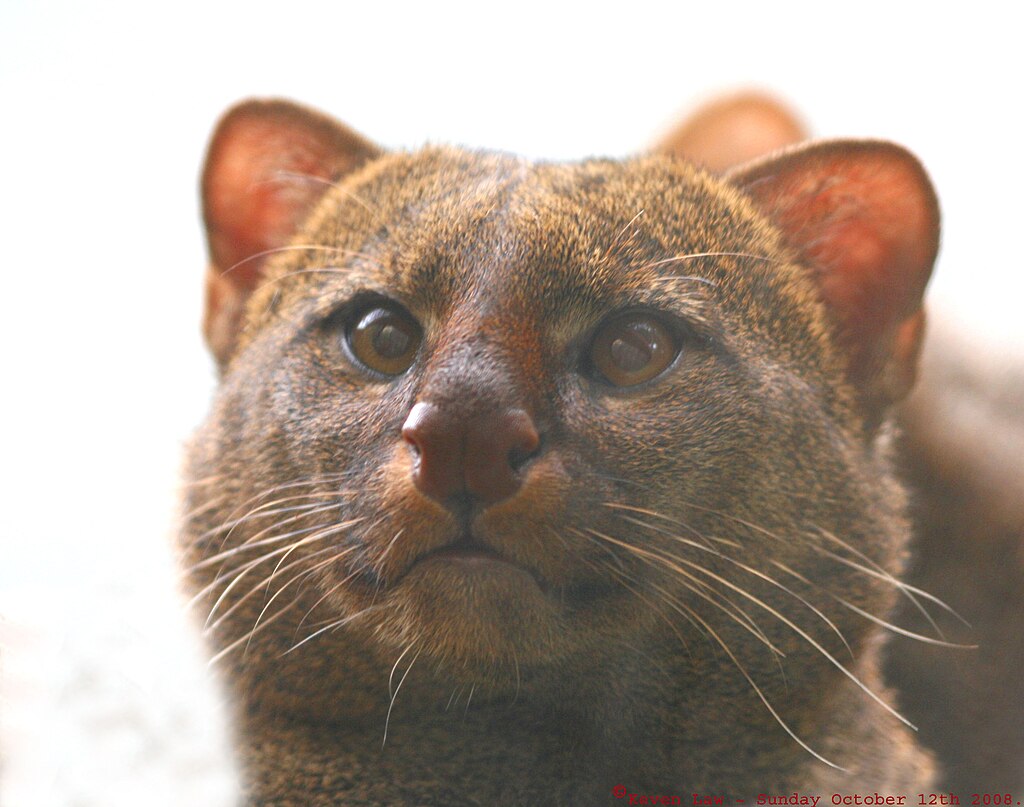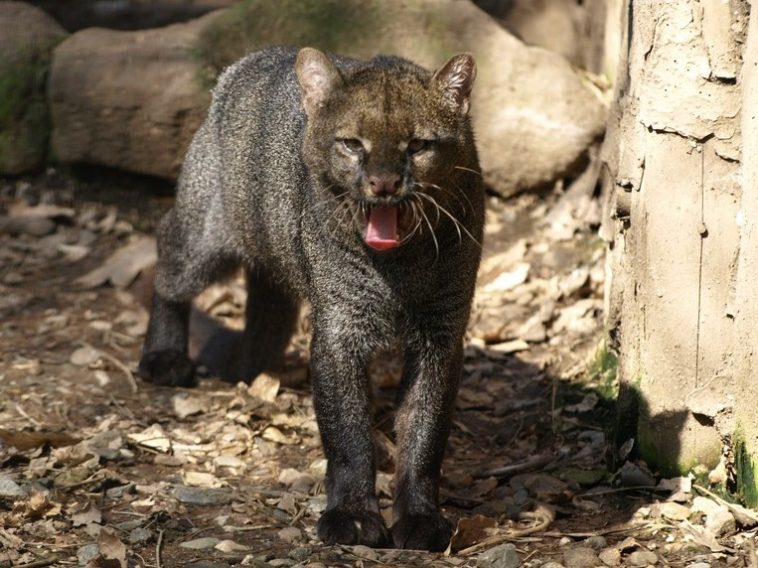
Meet the jaguarundi: a tiny wild cat that moves like an otter, looks like a weasel, chirps like a bird, and is often mistaken for a house cat.
Also known as the “otter cat,” jaguarundis roam Central and South America and were once thought to occasionally wander into Texas. However, despite multiple reports of sightings by citizens in the state annually, it’s been over 30 years since any were substantiated — and that was a roadkilled individual in 1986. Some say there is also an elusive “feral” population in Florida thought to be the lineage of a handful of escaped domesticated pets in the 1940s, but experts have yet to confirm that.
Somewhat weasel-like — and a bit unusual — in appearance, jaguarundis are long, slender cats with short legs, an elongated tail, and small eyes and ears with a flat head. Not much bigger than a housecat, the average jaguarundi weighs between 8 to 16 pounds. Their coats are uniform in color, generally in shades of red or gray.
Their vocal repertoire consists of roughly 13 different calls, which include growling, screaming, yapping, chattering, bird-like chirping, and a bizarre sound described as a “wah-wah” call.

These unique cats are extremely adaptable and can occupy a variety of environments, though they’re most commonly found in lowlands. They thrive in habitats from rainforest to shrublands, and are quite acrobatic in nature — they’ve been seen climbing trees, leaping into the air, and swimming across rivers.

Jaguarundis are opportunistic carnivores and dine on a varied diet of rodents, rabbits, reptiles, fish and birds. And, while they don’t have too many natural predators (which include boa constrictors, domestic dogs, and cougars), these cats are threatened by habitat destruction and human encroachment. Farmers also consider them a nuisance animal because they tend to raid poultry.
Have you ever spotted one?




